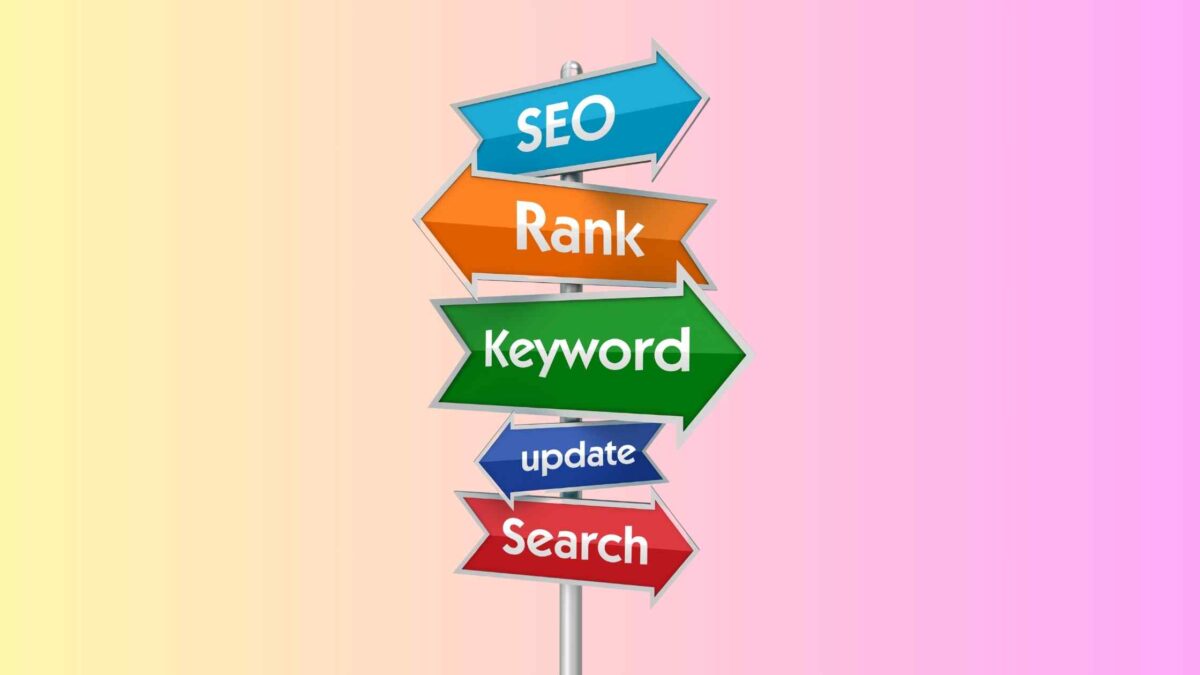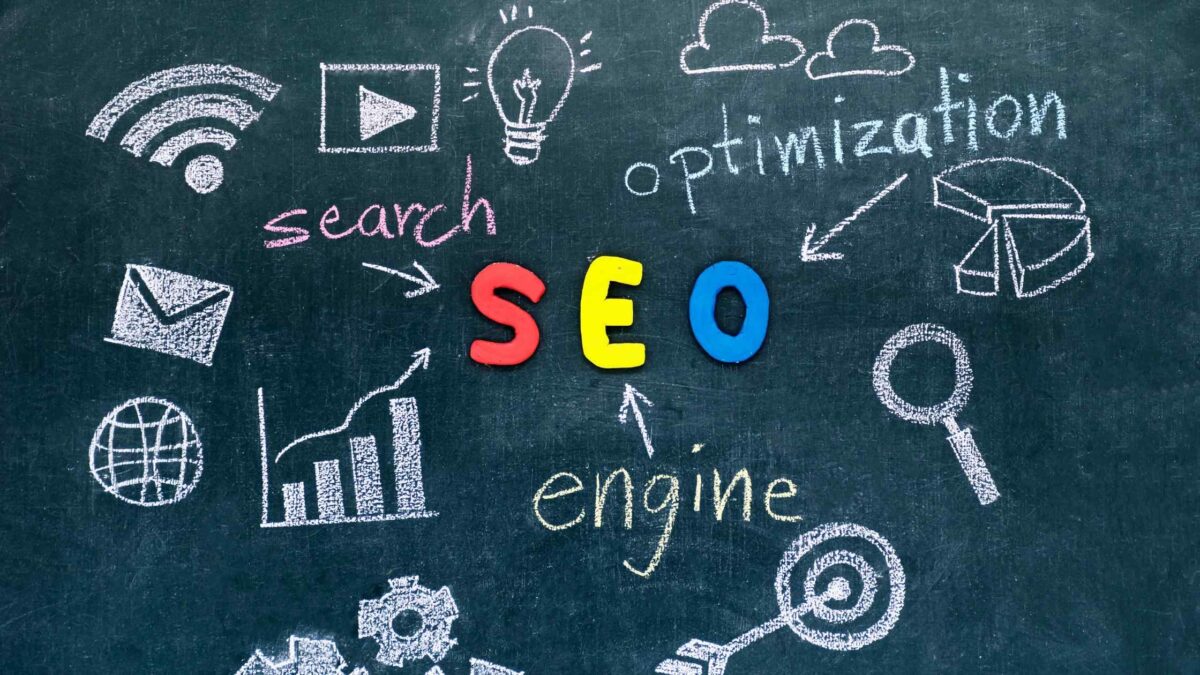In the world of the internet, getting noticed can be tough. But with Search Engine Optimization (SEO), you can boost your chances of standing out. SEO is about making your website more visible and attractive to search engines like Google. By understanding the basics of SEO and applying some simple tricks, you can improve your website’s ranking and attract more visitors. In this blog post, we’ll break down what SEO is, why it matters, and how you can use it to your advantage. Let’s dive in!
Search Engine Optimization Meaning / Introduction to Search Engine Optimization
In the vast digital realm, where websites vie for attention and visibility, mastering the art of Search Engine Optimization (SEO) is like having a secret weapon in your arsenal. So, what exactly is SEO? Simply put, it’s the process of fine-tuning your website to make it more appealing to search engines like Google, Bing, and Yahoo. By optimizing various elements of your site, you can improve its chances of ranking higher in search engine results pages (SERPs) when people search for relevant keywords.
Understanding the Basics
At its core, SEO revolves around understanding how search engines work and what they look for when determining which websites to display at the top of their results. While search engines use complex algorithms to evaluate and rank websites, some fundamental principles guide their decisions. These include factors like the relevance of your content to the search query, the quality of your website’s user experience, and the authority of your site in the eyes of search engines.

Why SEO Matters
You might be wondering why SEO is so important. Well, think about how you typically find information online. Chances are, you start by typing a few words or phrases into a search engine and then click on one of the top results that appear. Studies show that the majority of people never venture beyond the first page of search results, which means if your website isn’t ranking well, it’s missing out on valuable traffic. By optimizing your site for search engines, you can increase its visibility and attract more visitors, ultimately leading to more opportunities for engagement and conversion.
Getting Started with SEO
Now that you understand the basics of SEO and why it’s essential, you might be wondering how to get started. The good news is that you don’t need to be a technical wizard to improve your website’s SEO. There are plenty of simple strategies and best practices you can implement to make your site more search engine-friendly. From creating high-quality content that addresses the needs and interests of your target audience to optimizing your website’s structure and performance, there are countless ways to enhance your site’s SEO.
The Importance of Search Engine Marketing
In today’s digital age, where consumers turn to search engines like Google and Bing to find products, services, and information, Search Engine Marketing (SEM) has become a crucial component of any successful marketing strategy. SEM encompasses a range of tactics aimed at increasing a website’s visibility in search engine results pages (SERPs) through paid advertising and optimization techniques. But why exactly is SEM so important? Let’s explore the key reasons behind its significance in the digital landscape.

1. Targeted Reach
One of the primary benefits of SEM is its ability to target specific audiences based on their search queries. Unlike traditional advertising methods that cast a wide net, SEM allows advertisers to hone in on users who are actively searching for products or services related to their business. This targeted approach not only increases the likelihood of reaching interested consumers but also maximizes the efficiency of ad spend by focusing resources on the most relevant prospects.
2. Immediate Visibility
With SEM, businesses can achieve instant visibility in search engine results through paid advertisements known as pay-per-click (PPC) ads. Unlike organic search engine optimization (SEO), which can take time to yield results, PPC ads appear at the top of SERPs as soon as they are activated. This immediate visibility enables businesses to quickly capture the attention of potential customers and drive traffic to their websites, making SEM an invaluable tool for promoting new products, services, or promotions.
3. Measurable Results
Another advantage of SEM is its ability to provide detailed insights into campaign performance and return on investment (ROI). Through robust analytics and tracking tools, advertisers can monitor key metrics such as click-through rates, conversion rates, and cost-per-acquisition, allowing them to gauge the effectiveness of their SEM campaigns in real time. This level of transparency enables businesses to make data-driven decisions and optimize their advertising strategies for maximum impact and efficiency.
4. Flexibility and Control
SEM offers advertisers unparalleled flexibility and control over their campaigns. With features such as ad scheduling, budget allocation, and keyword targeting, businesses can tailor their SEM efforts to align with their unique goals, budgets, and target audiences. Whether it’s adjusting bids to optimize ad position, testing different ad creatives to improve performance, or targeting specific geographic regions, SEM empowers advertisers to customize their strategies for optimal result
Exploring Effective Search Engine Optimization Techniques
In today’s digital age, where consumers turn to search engines like Google and Bing to find products, services, and information, Search Engine Marketing (SEM) has become a crucial component of any successful marketing strategy. SEM encompasses a range of tactics aimed at increasing a website’s visibility in search engine results pages (SERPs) through paid advertising and optimization techniques. But why exactly is SEM so important? Let’s explore the key reasons behind its significance in the digital landscape.

1. Targeted Reach
One of the primary benefits of SEM is its ability to target specific audiences based on their search queries. Unlike traditional advertising methods that cast a wide net, SEM allows advertisers to hone in on users who are actively searching for products or services related to their business. This targeted approach not only increases the likelihood of reaching interested consumers but also maximizes the efficiency of ad spend by focusing resources on the most relevant prospects.
2. Immediate Visibility
With SEM, businesses can achieve instant visibility in search engine results through paid advertisements known as pay-per-click (PPC) ads. Unlike organic search engine optimization (SEO), which can take time to yield results, PPC ads appear at the top of SERPs as soon as they are activated. This immediate visibility enables businesses to quickly capture the attention of potential customers and drive traffic to their websites, making SEM an invaluable tool for promoting new products, services, or promotions.
3. Measurable Results
Another advantage of SEM is its ability to provide detailed insights into campaign performance and return on investment (ROI). Through robust analytics and tracking tools, advertisers can monitor key metrics such as click-through rates, conversion rates, and cost-per-acquisition, allowing them to gauge the effectiveness of their SEM campaigns in real time. This level of transparency enables businesses to make data-driven decisions and optimize their advertising strategies for maximum impact and efficiency.
4. Flexibility and Control
SEM offers advertisers unparalleled flexibility and control over their campaigns. With features such as ad scheduling, budget allocation, and keyword targeting, businesses can tailor their SEM efforts to align with their unique goals, budgets, and target audiences. Whether it’s adjusting bids to optimize ad position, testing different ad creatives to improve performance, or targeting specific geographic regions, SEM empowers advertisers to customize their strategies for optimal results.
Search Engine Optimization For Marketing
In the realm of digital marketing, Search Engine Optimization (SEO) stands as a formidable tool for amplifying your brand’s reach, engagement, and conversion rates. By strategically optimizing your online presence to align with search engine algorithms, you can position your brand front and center in the search results of potential customers actively seeking your products or services. Let’s delve into how integrating SEO into your marketing strategy can propel your brand to new heights of success.

1. Enhanced Visibility and Reach
At the core of SEO lies the ability to enhance your brand’s visibility in search engine results pages (SERPs), ensuring that your business is discoverable by users searching for relevant keywords. By optimizing your website’s content and structure, you can improve its ranking in search results, making it more likely to attract organic traffic from users interested in your offerings. This increased visibility not only expands your brand’s reach but also positions you as a credible authority in your industry, fostering trust and credibility among potential customers.
2. Targeted Audience Engagement
Unlike traditional forms of marketing that cast a wide net, SEO enables you to target specific audience segments based on their search intent and behavior. By understanding the keywords and phrases your target audience is using to search for products or services, you can tailor your content and messaging to resonate with their needs and preferences. This targeted approach not only increases the likelihood of attracting qualified leads but also enhances the effectiveness of your marketing efforts by ensuring that your message reaches the right audience at the right time.
3. Cost-Effective Marketing Strategy
One of the key advantages of SEO is its cost-effectiveness compared to traditional advertising channels such as television or print media. While paid advertising can yield immediate results, it often requires a significant investment of resources to maintain visibility over time. In contrast, SEO offers a sustainable and long-term approach to marketing that continues to drive results even after initial efforts have been made. By investing in SEO, you can achieve consistent, organic traffic to your website without incurring ongoing advertising costs, making it an attractive option for businesses of all sizes.
4. Measurable Results and Optimization Opportunities
Another benefit of SEO for marketing is its inherent measurability, allowing you to track and analyze key performance metrics to gauge the effectiveness of your efforts. By monitoring metrics such as website traffic, keyword rankings, and conversion rates, you can gain valuable insights into the impact of your SEO initiatives and identify areas for improvement. This data-driven approach enables you to refine your strategies over time, optimizing your website for better performance and staying ahead of the competition in the ever-evolving digital landscape.
Search Engine Optimization Digital Marketing
In the realm of digital marketing, Search Engine Optimization (SEO) stands as a cornerstone strategy for enhancing online visibility, driving targeted traffic, and maximizing conversions. By strategically optimizing your digital assets to align with search engine algorithms, you can elevate your brand’s presence and relevance in the vast landscape of the internet. Let’s explore how integrating SEO into your digital marketing initiatives can amplify your brand’s impact and success.

1. Elevating Online Visibility
At its core, SEO is about making your brand more visible and accessible to users searching for relevant information, products, or services online. By optimizing your website’s content, structure, and keywords, you can improve its ranking in search engine results pages (SERPs), ensuring that it appears prominently when users enter relevant search queries. This increased visibility not only enhances brand awareness but also establishes your business as a credible authority in your industry, driving trust and engagement among potential customers.
2. Driving Targeted Traffic
One of the key benefits of SEO in digital marketing is its ability to attract highly targeted traffic to your website. Unlike traditional advertising methods that rely on broad audience targeting, SEO allows you to connect with users who are actively seeking solutions to their specific needs or problems. By optimizing your content to address the pain points and interests of your target audience, you can attract qualified leads and drive them through the sales funnel, ultimately increasing the likelihood of conversion.
3. Maximizing Conversion Rates
Effective SEO goes beyond driving traffic to your website; it also focuses on optimizing the user experience to maximize conversion rates. By creating high-quality, engaging content that resonates with your target audience, you can encourage visitors to take desired actions, such as making a purchase, filling out a contact form, or subscribing to your newsletter. Additionally, optimizing your website for mobile devices and improving page load speed can enhance user satisfaction and reduce bounce rates, further increasing the likelihood of conversion.
4. Measuring and Refining Strategies
One of the strengths of SEO in digital marketing is its measurability, allowing you to track and analyze key performance metrics to assess the effectiveness of your efforts. By monitoring metrics such as website traffic, keyword rankings, and conversion rates, you can gain valuable insights into the impact of your SEO initiatives and identify areas for improvement. This data-driven approach enables you to refine your strategies over time, optimizing your digital marketing efforts for better results and staying ahead of the competition
On-Site Search Engine Optimization
In the realm of digital marketing, On-Site Search Engine Optimization (SEO) plays a pivotal role in enhancing a website’s visibility and relevance in search engine results pages (SERPs). This strategy involves optimizing various elements of your website to improve its search engine rankings and attract more organic traffic. Let’s delve into the key components of On-Site SEO and how you can leverage them to maximize your website’s performance.

1. Optimizing Content
High-quality, relevant content lies at the heart of On-Site SEO. By creating informative, engaging content that addresses the needs and interests of your target audience, you can increase your website’s visibility and attract more organic traffic. Incorporate targeted keywords naturally within your content to improve its relevance to search queries, but avoid keyword stuffing, which can detract from the user experience and harm your rankings.
2. Improving Meta Tags
Meta tags, including title tags and meta descriptions, provide essential information about your web pages to search engines and users. Optimizing these tags with relevant keywords and compelling descriptions can improve your click-through rates in search results and enhance your website’s overall visibility. Ensure that each page has a unique title tag and meta description that accurately reflects its content and entices users to click.
3. Enhancing URL Structure
A clean, descriptive URL structure not only improves user experience but also benefits your On-Site SEO efforts. Use descriptive keywords in your URLs to convey the content of each page and make it easier for both users and search engines to understand what the page is about. Avoid using long, complex URLs with unnecessary parameters, and strive to keep your URLs concise and user-friendly.
4. Optimizing Images
Images can enhance the visual appeal of your website and provide valuable context to your content. To optimize images for search engines, use descriptive filenames and alt tags that accurately describe the image content and incorporate relevant keywords. Additionally, optimize image file sizes to improve page load speed, which is a crucial ranking factor for both desktop and mobile search.
5. Ensuring Mobile-Friendliness
With the increasing prevalence of mobile devices, optimizing your website for mobile users is essential for On-Site SEO success. Ensure that your site is responsive and mobile-friendly, meaning it adapts seamlessly to different screen sizes and devices. Mobile-friendly websites not only provide a better user experience but also receive preferential treatment from search engines, which prioritize mobile-first indexing.
6. Enhancing Site Speed
Site speed is a critical factor in both user experience and search engine rankings. Slow-loading websites frustrate users and lead to higher bounce rates, negatively impacting your SEO performance. To improve site speed, optimize image sizes, minimize HTTP requests, leverage browser caching, and use a content delivery network (CDN) to distribute content more efficiently.
Off-Site Search Engine Optimization
Off-Site Search Engine Optimization (SEO) is a crucial aspect of improving your website’s visibility and authority in search engine results pages (SERPs). While On-Site SEO focuses on optimizing elements within your website, Off-Site SEO involves actions taken outside of your site to enhance its reputation and relevance in the eyes of search engines. Let’s dive into the key components of Off-Site SEO and how they can impact your website’s rankings.

1. Link Building
Link building is perhaps the most well-known aspect of Off-Site SEO. It involves acquiring backlinks from other websites to yours. These backlinks serve as “votes of confidence” in the eyes of search engines, indicating that your website is reputable and authoritative. However, not all backlinks are created equal. Quality matters more than quantity, so focus on earning links from authoritative, relevant websites within your industry.
2. Social Media Engagement
While social media signals themselves may not directly impact your website’s rankings, active engagement on social media platforms can indirectly benefit your Off-Site SEO efforts. Sharing your content on social media channels can increase its visibility and attract more traffic to your website. Additionally, social media activity can lead to increased brand awareness, which may result in more organic mentions and backlinks from other websites.
3. Online Reviews and Citations
Online reviews and citations play a significant role in local SEO and Off-Site SEO for businesses with physical locations. Positive reviews on platforms like Google My Business, Yelp, and TripAdvisor can improve your business’s visibility in local search results and build trust with potential customers. Similarly, citations—mentions of your business’s name, address, and phone number (NAP) on other websites—can contribute to your website’s authority and relevance, particularly in local search.
4. Guest Posting and Content Syndication
Guest posting involves writing and publishing articles on other websites within your industry. By contributing valuable content to reputable websites, you can establish yourself as an authority in your field and earn valuable backlinks to your site. Similarly, content syndication involves republishing your content on third-party websites or platforms. While these tactics can help increase your website’s visibility and attract more traffic, be mindful of duplicating content, as this can negatively impact your SEO.
5. Influencer Outreach
Collaborating with influencers and industry experts can be a powerful Off-Site SEO strategy. By partnering with influencers who have a large and engaged following, you can amplify your content’s reach and attract more traffic to your website. Additionally, influencers may share your content with their followers, resulting in valuable backlinks and social signals that can improve your website’s SEO performance.
- 10 Best Essential Business Management Techniques You Need to Know
- Maximize Efficiency and Growth: Expert Product and Service Management Solutions
- Why Macroeconomics is the study of the economy as a whole – Best Info
- Understanding Supply and Demand: A Comprehensive Explanation
- The Nature and Scope of Macroeconomics- A Best Guide
FAQ
1. What is Search Engine Optimization (SEO)?
Search Engine Optimization (SEO) is the process of optimizing a website to improve its visibility and ranking in search engine results pages (SERPs). By optimizing various elements such as content, keywords, and technical aspects, SEO aims to attract more organic (non-paid) traffic to a website from search engines like Google, Bing, and Yahoo.
2. Why is SEO important for marketing?
SEO is crucial for marketing because it helps businesses increase their online visibility, attract targeted traffic, and maximize conversions. By optimizing their digital assets for search engines, businesses can reach potential customers who are actively searching for their products or services, resulting in higher brand visibility, engagement, and ultimately, revenue.
3. What are the key components of On-Site SEO?
On-site SEO focuses on optimizing elements within a website to improve its search engine rankings. Key components include optimizing content with relevant keywords, improving meta tags (title tags and meta descriptions), enhancing URL structure, optimizing images, ensuring mobile-friendliness, and enhancing site speed.
4. What is Off-Site SEO and why is it important?
Off-site SEO involves optimizing external factors that impact a website’s search engine rankings, such as backlinks from other websites, social media signals, and online mentions. Off-site SEO is important because it signals to search engines that a website is authoritative and trustworthy, which can positively impact its ranking in search results.
5. How can businesses measure the effectiveness of their SEO efforts?
Businesses can measure the effectiveness of their SEO efforts by monitoring key performance metrics such as website traffic, keyword rankings, conversion rates, and bounce rates. By analyzing these metrics, businesses can gain insights into the impact of their SEO initiatives and identify areas for improvement to refine their strategies over time.
6. Are there any free resources available for learning SEO?
Yes, there are many free resources available for learning SEO, including online courses, tutorials, blogs, and forums. These resources cover topics ranging from basic SEO principles to advanced techniques and can help individuals and businesses improve their understanding and implementation of SEO best practices.

